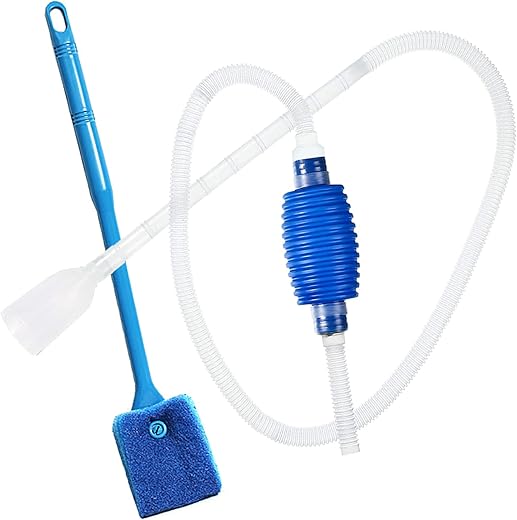The world’s oceans are facing unprecedented challenges due to overfishing, habitat destruction, and climate change. As the global demand for seafood continues to rise, sustainable fishing practices and responsible aquaculture have become essential to preserving marine ecosystems and ensuring food security. This blog post will explore the importance of sustainable fisheries, the role of aquaculture, and the steps we can take to protect our oceans for future generations.
The Problem of Overfishing
Overfishing occurs when fish are caught at a rate faster than they can reproduce:
- Declining Fish Stocks:
- Species at Risk: Iconic species like Atlantic cod and bluefin tuna have suffered dramatic population declines.
- Ecosystem Imbalance:
- Trophic Cascades: Removing key species disrupts food webs, affecting entire ecosystems.
- Economic Impact:
- Fisheries Collapse: Leads to loss of livelihoods and food sources for communities dependent on fishing.
Causes of Overfishing
Several factors contribute to unsustainable fishing practices:
- Illegal, Unreported, and Unregulated (IUU) Fishing:
- Lack of Compliance: Fishing without authorization or ignoring quotas.
- Bycatch:
- Non-Target Species: Unintended catch of marine life like dolphins, turtles, and seabirds.
- Destructive Fishing Methods:
- Bottom Trawling: Destroys seabed habitats.
- Dynamite and Cyanide Fishing: Harmful to coral reefs and non-target species.
The Role of Sustainable Fishing
Sustainable fishing aims to meet current needs without compromising future generations:
- Science-Based Management:
- Catch Limits: Based on stock assessments to prevent overexploitation.
- Selective Fishing Gear:
- Reducing Bycatch: Using gear that targets specific species and sizes.
- Protected Areas:
- Marine Reserves: Zones where fishing is restricted to allow ecosystems to recover.
Responsible Aquaculture
Aquaculture, or fish farming, is a growing source of seafood:
- Sustainable Practices:
- Closed Systems: Recirculating aquaculture systems minimize environmental impact.
- Integrated Multi-Trophic Aquaculture: Combines species at different trophic levels to reduce waste.
- Challenges:
- Environmental Concerns: Pollution from waste, disease transfer to wild populations.
- Resource Use: Dependence on wild-caught fish for feed.
Certification and Consumer Choices
Certifications help consumers identify sustainable options:
- Marine Stewardship Council (MSC):
- Eco-Labeling: Indicates seafood from sustainable fisheries.
- Aquaculture Stewardship Council (ASC):
- Standards for Farms: Ensuring responsible aquaculture practices.
- Seafood Guides:
- Consumer Resources: Organizations like Seafood Watch provide recommendations.
Policy and International Cooperation
Effective management requires global efforts:
- International Agreements:
- United Nations Fish Stocks Agreement: Promotes cooperation on conservation.
- Regional Fisheries Management Organizations (RFMOs):
- Collaborative Management: Oversees fishing activities in international waters.
- Enforcement:
- Monitoring and Surveillance: Combating IUU fishing through technology and cooperation.
Technological Innovations
Advancements support sustainable practices:
- Satellite Tracking:
- Vessel Monitoring Systems (VMS): Track fishing activities to enforce regulations.
- Selective Gear Technology:
- Bycatch Reduction Devices: Improve selectivity and reduce unwanted catch.
- Data Collection:
- Electronic Monitoring: Enhances data accuracy for stock assessments.
Community and Indigenous Involvement
Local communities play a vital role:
- Traditional Knowledge:
- Sustainable Practices: Indigenous methods often align with conservation goals.
- Community Management:
- Co-Management: Involving fishers in decision-making promotes compliance.
What Individuals Can Do
Consumers have the power to influence the market:
- Choose Sustainable Seafood:
- Ask Questions: Inquire about the source and sustainability of seafood.
- Support Responsible Businesses:
- Patronize Restaurants and Retailers: That prioritize sustainable options.
- Reduce Waste:
- Responsible Consumption: Minimizing food waste lessens pressure on resources.
Conclusion: Charting a Course for Sustainable Seas
Sustainable fishing and aquaculture are essential components in preserving our oceans’ health and resources. By embracing responsible practices, supporting policy initiatives, and making informed consumer choices, we can contribute to a future where marine ecosystems thrive, and seafood remains a viable resource for all. The collective efforts of governments, industries, communities, and individuals are key to navigating the challenges ahead and ensuring that our oceans continue to sustain life on Earth.








